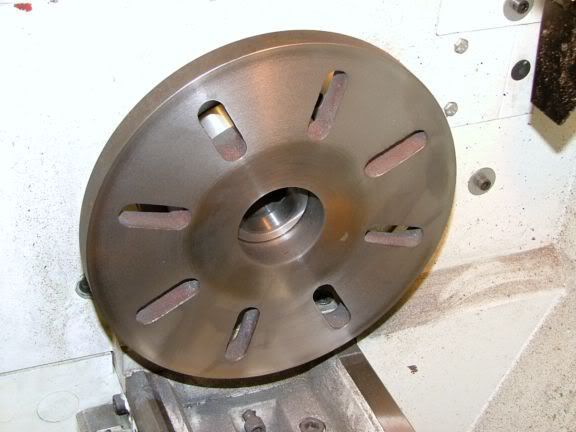Rudy, as Jens has pointed out, if castings are cooled down too quickly they get chilled areas on them that are a very hard skin, and almost impossible to get through.
In an attempt to get rid of this chilled area, if you have a wood burner or open fire, then you can put the castings into it as you are shutting down for the night, this heats up the castings and allows them to cool really slowly, 99% of the time, this will soften the chilled area.
Another way is a tub full of dry sand, place the castings into a deep hollow inside the sand and heat up to bright red, once there, cover over with the hot sand that is in the tub and cover over with a lid to retain the heat, as before, leave to cool overnight.
This picture of the faceplate off my lathe shows a very good example of chilling in a casting.
Whenever you come to use a faceplate, it should always be checked for runout, and if it is more than 0.001" out, then the face should be skimmed all the way across.
I am lucky in that I have fairly large machinery, so I just mounted up a tungsten cutter and sent it on a 20 minute journey across the face.
As you can see, there are two different grain structures shown, one on the outer rim and on the hub, the other between both of those. The outer rim and hub are thicker than the middle bit with the slots, so cooled down slower giving a much finer and softer grain, the bit between them was only thin, so cooled down rather fast and so had a much coarser and harder grain structure, this was the part that was chilled.
John





